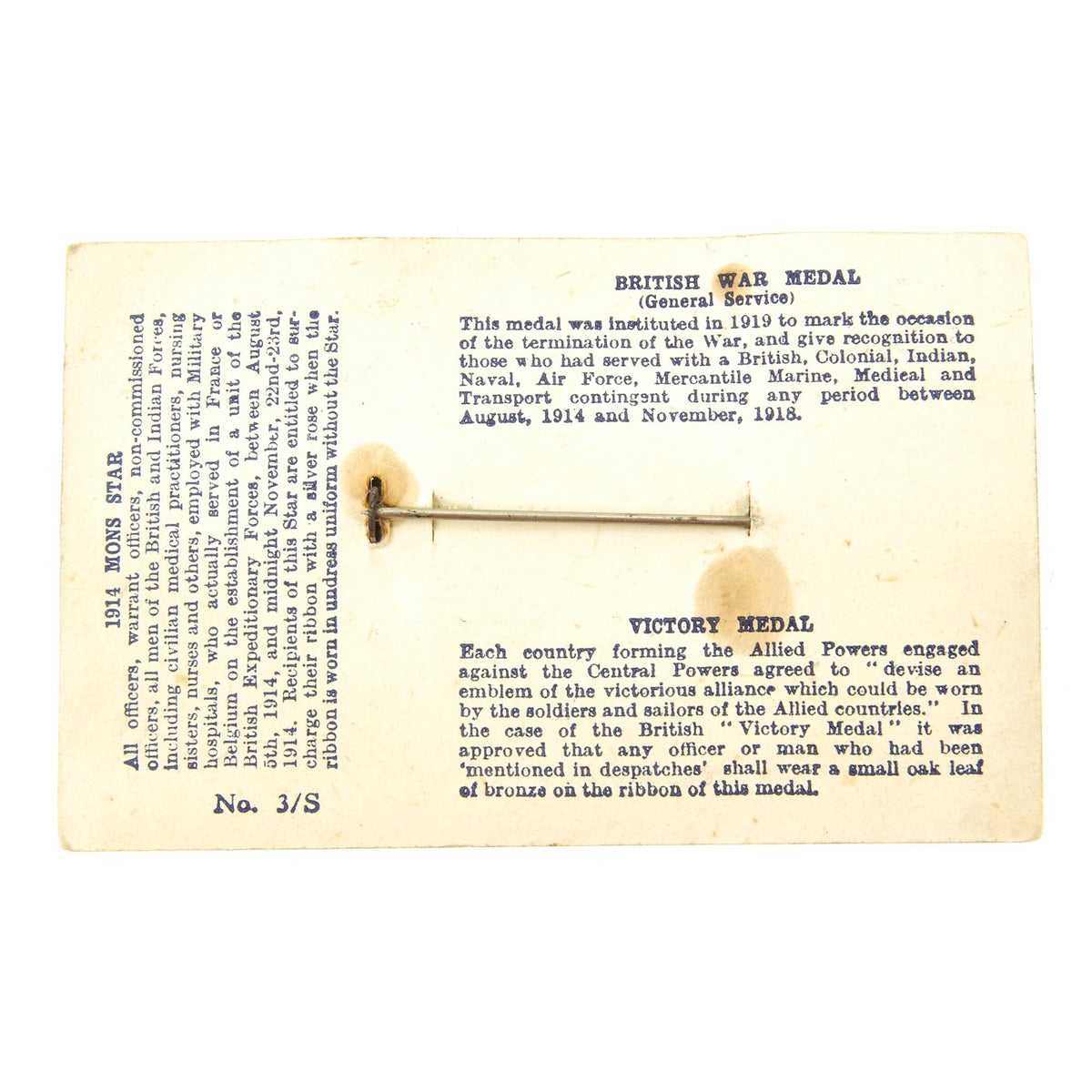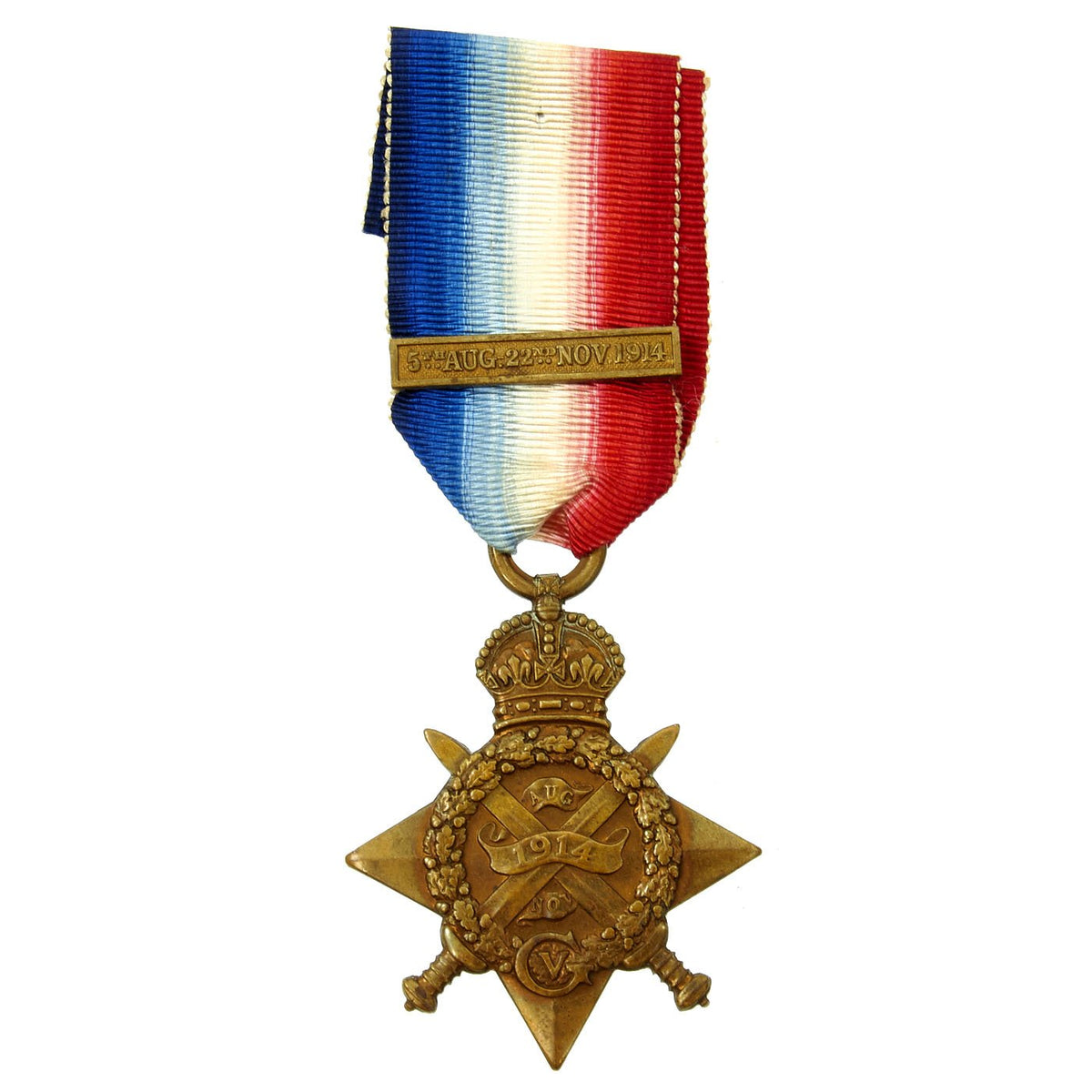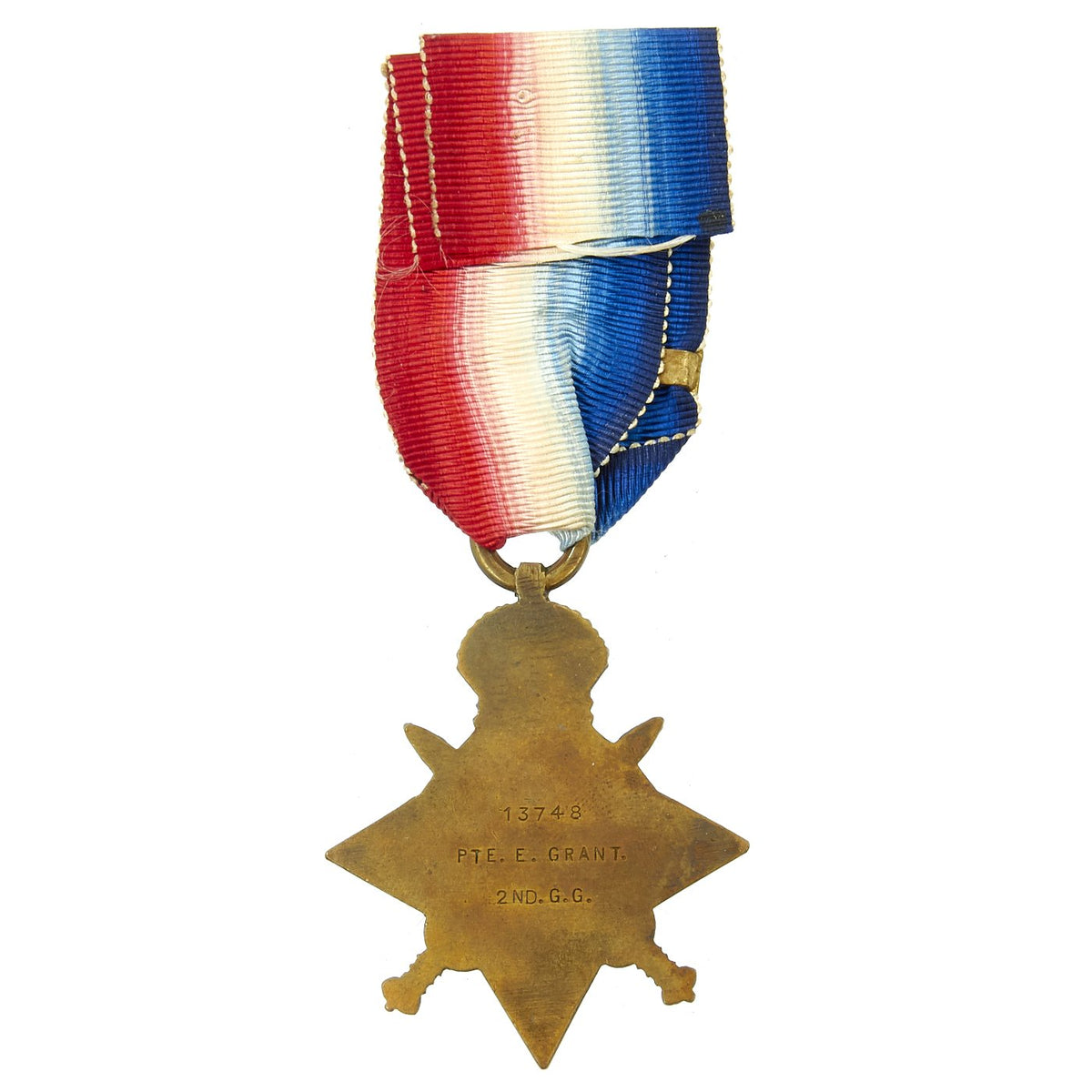Original British WWI 1914 Mon Star Medal Named to Pte. E. Grant 2nd Grenadier Guards with Photo Original Items
$ 295,00 $ 118,00
Original Items: One of a Kind Set. This is a nice set from early in WWI. It consists of a “named” MONS STAR medal and comes together with a period photograph of the Grenadier Guardsman in question. The back of the medal is stamped with the soldiers information:
13748
PTE. E. GRANT.
2ND.G.G.
Private E. Grant was a soldier in the 2nd Battalion of the Grenadier Guards Regiment, which was one of the first units to reach and fight in France. The included photograph, 3 1/2″ X 5 1/4″ shows Private Grant standing carrying a swagger stick which Privates (Other Ranks) were only issued with when going on leave. The requirement for Other Ranks to be issued Officer’s Swagger sticks when going on leave in the First World War was adopted because the War Office were receiving multiple complaints of Privates standing on Rail Road Station Platforms with nothing in their hands. The result was that many were seen to “scratching their crotches” or “picking their noses”. The Swagger Stick gave them something else to do with their hands.
In addition to the Medal with its ribbon and the photograph comes the silk medal ribbon bar, to be worn when it was inappropriate for the complete medal with ribbon to be worn.
A nice set from Britain’s WWI Grenadier Guards, ready to frame and display!
More on the Grenadier Guards Regiment:
The Grenadier Guards (GREN GDS) is an infantry regiment of the British Army. It can trace its lineage back to 1656 when Lord Wentworth’s Regiment was raised in Bruges to protect the exiled Charles II. In 1665, this regiment was combined with John Russell’s Regiment of Guards to form the current regiment, known as the 1st Regiment of Foot Guards. Since then, the regiment has filled both a ceremonial and protective role as well as an operational one. In 1900, the regiment provided a cadre of personnel to form the Irish Guards; while later, in 1915 it also provided the basis of the Welsh Guards upon their formation.
At the outbreak of the First World War in August 1914, the regiment consisted of three battalions. With the commencement of hostilities, the regiment raised a service battalion, the 4th Battalion, and a reserve battalion, known as the 5th (Reserve) Battalion, which was used to carry out ceremonial duties in London and Windsor during the war. The 2nd Battalion of the regiment was sent to France in August,[12] and the 1st Battalion followed to Belgium in October. They took part in the early stages of the fighting during the period known as “Race to the Sea”, during which time they were involved significantly at the First Battle of Ypres.
Fast Shipping with Professional Packaging
Thanks to our longstanding association with UPS FedEx DHL, and other major international carriers, we are able to provide a range of shipping options. Our warehouse staff is expertly trained and will wrap your products according to our exact and precise specifications. Prior to shipping, your goods will be thoroughly examined and securely secured. We ship to thousands clients each day across multiple countries. This shows how we're dedicated to be the largest retailer on the internet. Warehouses and distribution centres can be located throughout Europe as well as the USA.
Note: Orders with more than one item will be assigned a processing date depending on the item.
Before shipping before shipping, we'll conduct a thorough inspection of the items you have ordered. Today, the majority of orders will be delivered within 48 hours. The delivery time will be between 3-7 days.
Returns
The stock is dynamic and we cannot completely manage it because multiple stakeholders are involved, including our factory and warehouse. So the actual stock may alter at any time. It's possible that you may not receive your order once the order has been made.
Our policy is valid for a period of 30 days. If you don't receive the product within 30 days, we are not able to issue a refund or an exchange.
You can only return an item if it is unused and in the same state as the day you received it. You must have the item in its original packaging.
Related products
Uncategorized
Australian WWII Owen MK1 Machine Carbine SMG Custom Fabricated Replica with Sling Original Items
Uncategorized
Uncategorized
Uncategorized
Uncategorized
Uncategorized
Armoured Fighting Vehicles of the World: AFVs of World War One (Hardcover Book) New Made Items
Uncategorized
Uncategorized
Angolan Rebel 1970s era 60mm Inert Display Mortar from Angolan Civil War Original Items
Uncategorized
Uncategorized
Uncategorized
Uncategorized
Uncategorized
Uncategorized
Uncategorized












































































